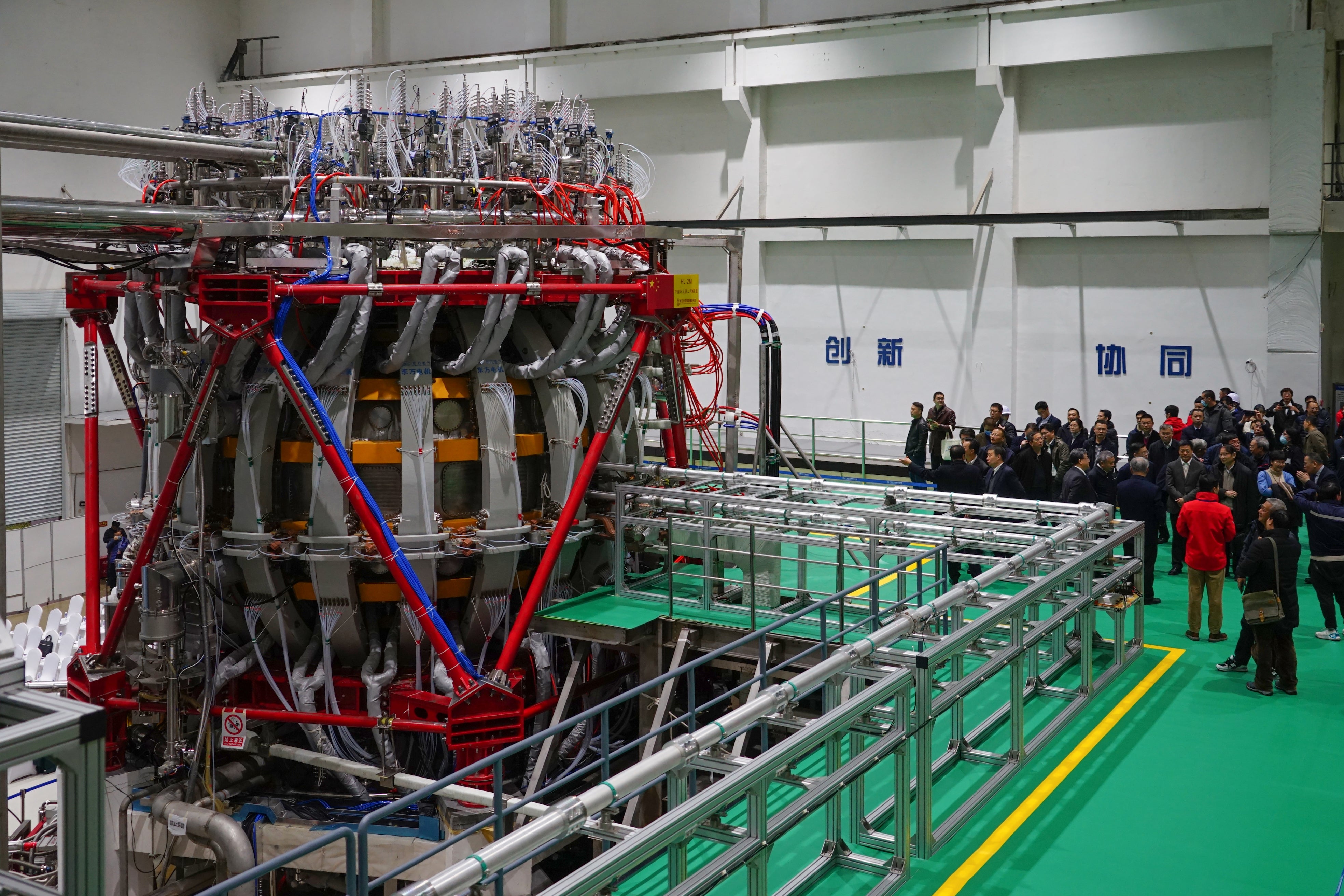China switches on ‘artificial sun’ that is five times hotter than the real thing
Researchers hope nuclear fusion device could provide almost limitless clean energy
A nuclear fusion reactor in China has set a new record for sustained high temperatures after running five times hotter than the sun for more than 17 minutes, according to state media.
The Experimental Advanced Superconducting Tokamak (EAST), known as an “artificial sun”, reached temperatures of 70,000,000C during the experiments, the Xinhua News Agency reported.
The ultimate aim of developing the artificial sun device is to deliver near-limitless clean energy by mimicking the natural reactions occurring within stars.
“The recent operation lays a solid scientific and experimental foundation towards the running of a fusion reactor,” said Gong Xianzu, a researcher at the Institute of Plasma Physics of the Chinese Academy of Sciences, who led the latest experiment.
The EAST project, which has already cost China more than £700bn, will run the experiment until June.
Nuclear fusion has been touted as the holy grail of clean energy production, however it remains a long way from being realised outside of a laboratory, despite decades of research into the technology.
Replicating the physics of the actual sun, nuclear fusion reactors merge atomic nuclei in order to generate massive amounts of energy that can be turned into electricity.
The process requires no fossil fuels and leaves behind no hazardous waste materials, unlike the nuclear fission process that powers commercial nuclear energy production. Physicists also claim that there is far less risk of an environmental disaster.

China’s reactor team will also provide technical support to another nuclear fusion reactor megaproject currently being constructed in Marseille, France.
The International Thermonuclear Experimental Reactor (ITER) will be the world’s largest reactor once completed.
The UK is also planning to build a nuclear fusion power station as part of its “green industrial revolution”, with a shortlist of five locations for the site announced last month.
The Spherical Tokamak for Energy Production (STEP) project aims to produce a concept design by 2024 and deliver power to people’s homes at some point in the 2040s.
Join our commenting forum
Join thought-provoking conversations, follow other Independent readers and see their replies
Comments
Bookmark popover
Removed from bookmarks